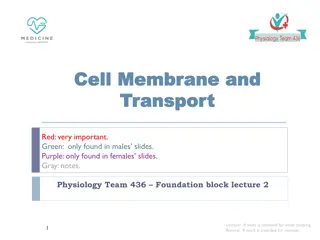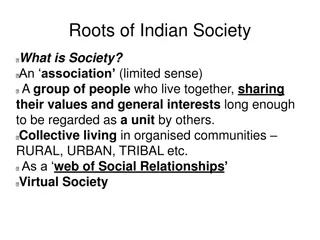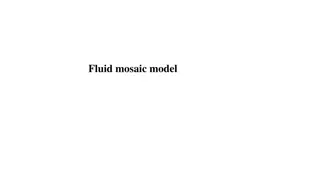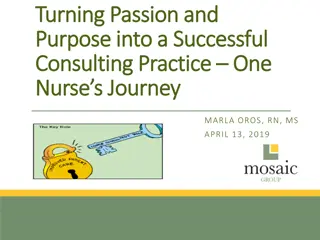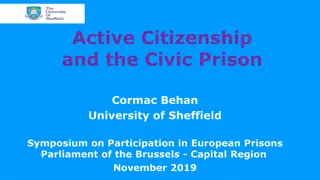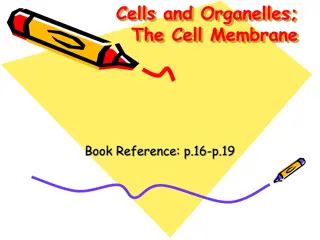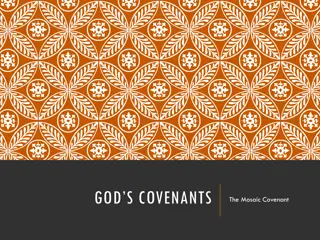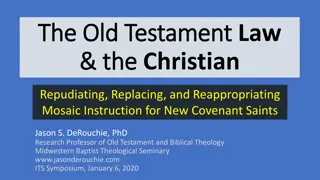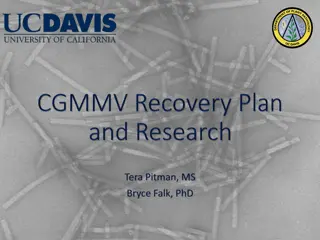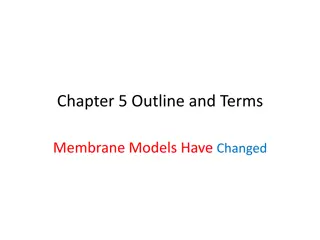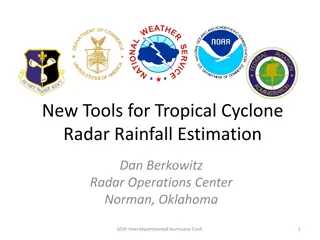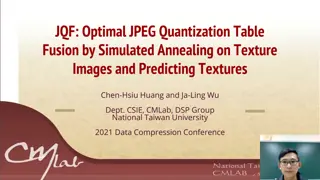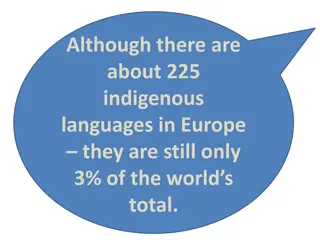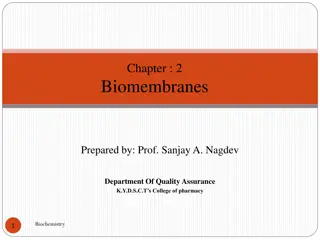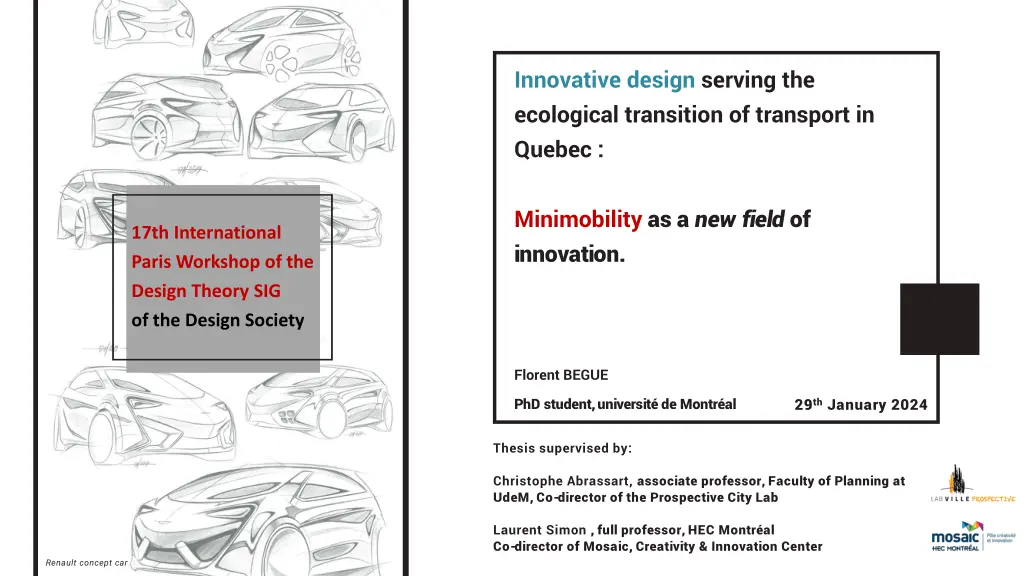
Innovative Concept: Minimobility for Ecological Transport Transition in Quebec
Explore the innovative concept of minimobility as a new field of innovation in Quebec's transport sector, aiming to accelerate the ecological transition. This doctoral project addresses the challenges of reducing pollution, promoting sustainable transport modes, and rethinking car dependency through design and innovation tools. By questioning traditional solo driving habits and proposing alternatives, the research aims to shape a more sustainable future for transportation in Quebec.
Download Presentation

Please find below an Image/Link to download the presentation.
The content on the website is provided AS IS for your information and personal use only. It may not be sold, licensed, or shared on other websites without obtaining consent from the author. If you encounter any issues during the download, it is possible that the publisher has removed the file from their server.
You are allowed to download the files provided on this website for personal or commercial use, subject to the condition that they are used lawfully. All files are the property of their respective owners.
The content on the website is provided AS IS for your information and personal use only. It may not be sold, licensed, or shared on other websites without obtaining consent from the author.
E N D
Presentation Transcript
Innovative design serving the ecological transition of transport in Quebec : Minimobility as a new field of innovation. 17th International Paris Workshop of the Design Theory SIG of the Design Society Florent BEGUE PhD student, universit de Montr al 29th January 2024 Thesis supervised by: Christophe Abrassart, associate professor, Faculty of Planning at UdeM, Co-director of the Prospective City Lab Laurent Simon , full professor, HEC Montr al Co-director of Mosaic, Creativity & Innovation Center Renault concept car
Doctoral project Problem framing and research questions AGENDA Minimobility, a new innovation field ? Intermediate vehicules as a new mode
2 Problem framing TRANSPORT AND POLLUTION IN QUEBEC The transport sector is one of the major levers of decarbonization in the world, as in Quebec. of the energy consumed in Quebec is linked to the transport sector It must be thoroughly renovated to enable the achievement of GHG reduction targets , i.e. - 37.5% compared to the 1990 level in 2030 and carbon neutrality by 2050. of GHG emissions come from the transport sector* It is therefore imperative to move towards greater sobriety in this sector, through new alternatives to solo driving. commuting is done alone in your vehicle** *Source: The state of energy in Quebec, Whitmore and Pineau, 2023 **Source: The state of the automobile in Quebec, La Violette et al ., 2020
3 Problem framing TRANSPORT AND POLLUTION IN QUEBEC Reduce direct and indirect impacts by thinking about innovative alternatives for new modes of transport. Rethink thesystem in an innovative way while maintaining the service . source: The system of transport nuisances in urban areas, Heran, 2017
4 Problem framing CAR-SUPREMACY (especially AUTO-SOLO) IS NOT QUESTIONED Car dependency is anchoring in our travel habits, (Jacobs, 1961; Newman and Kenworthy, 1989; Dupuy, 1999) (Paulhiac and Kaufmann, 2006; Laviolette et al ., 2020) particularly in Quebec . However, there is a gap between the speeches made by public policy makers in terms of sustainable mobility (PMD 2030) and the reality of the projects undertaken for its development. (Laviolette et al ., 2020) Current solutions do not seem adapted to tomorrow's problems (Amar, 2015) The proposed approach takes a schizophrenic path (we know what to do, but we don t do it). (Banister, 2008)
The research 5 My main research objective How innovative design tools and prospective can help to collectively define and territorialize the emerging concept of minimobility as a new field of innovation to help accelerate the ecological transition of Quebec transportation system ? . How can design facilitate the rise of alternative and desirable solutions, integrating lighter and more economical modes of transport for cities, conveying new values of sustainability?
The research 15 RESEARCH QUESTIONS Description Predictive Exploratory WHAT BRAKES AND LEVERS? WHAT COMMON VISION? AND FOR WHAT IMPACTS? innovative design and conceptual prospective, tools to refine the identity of objects and imagine new trajectories for the transport sector support the ecological transition of Quebec's cities and territories in the transportaion sector, and the growth of a new job- creating sector of activity to the emergence of a new concept, minimobility by 2040, driven by intermediate vehicles in Quebec
7 AN INNOVATIVE GAP TO EXPLORE FROM MICROMOBILITY TO MINIMOBILITY TREND SCENARIO Increase the weight and power of vehicles, falling down of the production of subcompact vehicles (Luciano, 2017) MICROMOBILITY (H ran, 2018; Abduljabbar et al., 2021) MINIMOBILITY (Bigo et al., 2022; Riggs and Shukla, 2021)
8 An emerging concept to explore FROM MICROMOBILITY TO MINIMOBILITY (H ran, 2018; Abduljabbar et al., 2021) (Bigo et al., 2022; Riggs and Shukla, 2021) MICROMOBILITY MINIMOBILITY INTERMEDIATE VEHICLES
6 An emerging concept, which needs to be refined MINIMOBILITY AS AN ALTERNATIVE AND AS A CATALYST 2021: Ewert et al., potential of small electric vehicles 2021: Riggs and Shukla, proposed minimobility definition 2022: Behrendt et al., conceptualization of micromobility 2022: Bigo et al., typology of intermediate vehicles SCIENTIFIC LITERATURE URBAN EXPERIMENTS 2021: Book on Small Electric Vehicles (AIE) 2022: McKinsey report on the potential market 2023: ITF (international transportation forum) report on Smaller than car mobility ECONOMIC REPORTS
9 An innovative solution to be contextualized INTERMEDIATE VEHICLES Design and distribution of a new mode of transport, bringing disruptive innovation* : light vehicles, low in energy and carbon, adapted to short distance mobility, intermediate vehicles . (*Bartman, 2015) INTERMEDIATE VEHICLES all individual modes of less than 600 kg between the classic bicycle and the car LIGHTER MORE AFFORDABLE LESS POLLUTANTS SUFICIENTS Bigo et al. (2022)
12 IN ASIA Tuk tuk, Thailand Hong Guang Mini , China Kei cars, Japan Rikshaw, India Cargo bike, China
13 IN EUROPE Micro cars Twizy, Renault, France Cargo bikes AMI, Citroen, France
14 IN NORTH AMERICA Golf Cart communities, USA Low speed vehicles, Canada Peach Tree city, GA, Sun city, AZ, Locomotion, QC LSV EXPERIMENTS: Kargo-ev, QC Quebec (2002/2008-2013) Ontario (2017/2027)
10 C-K as a map : The Extr me d fi
10 C-K as a map : The Extr me d fi
9 Introducing the Modal System MODAL SYSTEM : A STRUCTURAL ANALYSIS OF TRANSPORTATION Any trip requires a reliable mode, a sufficiently meshed network, a competent user and a set of common rules . (H ran, 2021) TECHNICAL DIMENSION HUMAN DIMENSION INDIVIDUAL DIMENSION MODE of Transport USER COLLECTIVE DIMENSION RULES NETWORK (based upon H ran, 2021)
9 Introducing the Modal System MODAL SYSTEM : A STRUCTURAL ANALYSIS OF TRANSPORTATION Any trip requires a reliable mode, a sufficiently meshed network, a competent user and a set of common rules . (H ran, 2021) (based upon H ran, 2021)
9 A PROSPECTIVE APPROACH TO RETHINK THE SYSTEM MORPHOLOGICAL ANALYSIS To think about what we need to intermediate in Quebecor s day-to- day mobility, we need to imagine what could be a future including minimobility. implement vehicles Morphological analysis table concerning the modal system of intermediate vehicles and its hypotheses for evolution for Quebec in 2040
16 Methodology: Intervention-research (IR) REASONING IN THE UNKNOWN TO TRANSFORM THE TRAJECTORIES OF TRANSPORTATION SYSTEM INTERVENTION RESEARCH QUALITATIVE METHODOLOGY FORESIGHT DKCP APPROACH METHODOLOGY IR C-K Theory French school of foresight (Godet and Durance, 2011) INITIAL DIAGNOSIS + challenge framing INITIAL DIAGNOSIS (Hatchuel et Weil, 2003) STATE OF KNOWLEDGE + UNKOWN + MORPHOLOGICAL ANALYSIS with C-K RATIONAL MYTH CONCEPTUALIZATION CODESIGN WORKSHO based on scenarios CONCEPTUALIZATION ASSESSMENT AND LEARNING Backcasting: prospective approach. Reasonning in the unknown Minimobility is an emergent concept, wich needs to be territorialized and refined PROPOSITIONS EXPERIMENTATION + backcasting Guide action from the present to the future to achieve the desired vision (Hatchuel, 1998 ; David, 2000, Aggeri, 2016) (Abrassart et Scherrer,2021) 3 IR CYCLES* AS CASE STUDIES
Mthodologie : Recherche-intervention (RI) RAISONNER DANS L INCONNU POUR INVENTER DES SYSTEMES DE TRANSPORTS DECRABONES ET DESIRABLES AU QUEBEC RECHERCHE INTERVENTION APPROCHE M THODOLOGIE DKCP prospectif QUALITATIVE M THODOLOGIE RI Th orie C-K Ecole fran aise de prospective (Godet and Durance, 2011) DIAGNOSTIC INITIAL + cadrage des d fis DIAGNOSTIC INITIAL (Hatchuel et Weil, 2003) ETAT DES CONNAISSANCES + INCONNU + ANALYSE MORPHOLOGIQUE avec C-K MYTHE RATIONNEL CONCEPTUALISATION Ateliers de CODESIGN bas s sur des sc narios CONCEPTUALISATION VALUATION ET APPRENTISSAGE Backcasting : approche prospective. Raisonner dans l inconnu La minimobilit est un concept mergent, qu il faut territorialiser et affiner PROPOSITIONS EXP RIMENTATION + Backcasting Guider l action du pr sent vers l avenir pour r aliser la vision souhait e (Hatchuel, 1998 ; David, 2000, Aggeri, 2016) (Abrassart et Scherrer,2021) 3 CYCLES DE RI COMME TUDES DE CAS
CHOICE OF RESEARCH FIELDS Objective : explore and define trajectories on conditions through different cases in the Quebec transport ecosystem 17 RATIONAL MYTH RATIONAL MYTH RATIONAL MYTH Communauto, as a major player in the ecological transition in urban areas and a an innovative operator of intermediate vehicles in 2040 The AMD, as a political asset for reflection on shared streets in 2040 in Montreal. Minimobility as a catalyst structuring the revision of public space HQ as scenographer/conductor of the intermediate vehicle ecosystem in Quebec in 2040, to face the necessary sobriety of the transport of the future
18 DOCTORAL PROJECT: THE TARGETED OBJECTIVES STAFF SOCIAL SCIENTIST Promote minimobility and the adoption of intermediate vehicles, innovative solutions to the transport sector crisis Paving the way for the integration of these new modes into public policies and help develop a new innovation ecosystem around Design serving the transition: alternative and desirable scenarios to solo driving, including these new vehicles.
THANK YOU FOR YOUR ATTENTION! FLORENT BEGUE florent.begue@umontreal.ca NYC in transition!!!!
Bibliography Abduljabbar, R.L., Liyanage, S., & Dia, H. (2021). The role of micro-mobility in shaping sustainable cities: A systematic literature review. Transportation research part D: transport and environment , 92, Abrassart, C., Lavoie, N., & Cyr, C. (2017). Un quartier d conomie circulaire comme sc nario d int gration du Campus MIL la ville? Un atelier de co-design prospectif. Du terrain vague au campus urbain int grer. Abrassart C. et Scherrer F. (2021), Montr al 2050. Prospective participative dans le cadre de l laboration du Plan d urbanisme et de mobilit de la Ville de Montr al, Rapport du Lab Ville Prospective pour la Ville de Montr al, d cembre 2021. Aggeri, F. (2016). La recherche-intervention: fondements et pratiques. In J rome Barth lemy et Nicolas Mottis. A la pointe du management. Ce que la recherche apporte au manager, Dunod, 79-100 Amar, G. (2015). Conceptual foresight: for an open future. Theoretical approach and illustration in the world of transport. Futuribles, (404), 17-27. Banister, D. (2008). The sustainable mobility paradigm. Transport policy , 15(2), 73-80. Bigo, A., H ran, F., Jacquemin, H., Lesay, T., Luciano, F., Saladin, JL, ... & Trouv , B. (2022). Definition and typology of intermediate vehicles. Urban Transport , (1), 4-8. Behrendt, F., Heinen, E., Brand, C., Cairns, S., Anable, J., & Azzouz, L. (2022). Conceptualizing Micromobility. Preprints.org. David, A. (2000). La recherche intervention, un cadre g n ral pour les sciences de gestion?. In Conf rence de l'AIMS. Dupuy, G. (1999). From the magiccircle to automobiledependence : measurements and political implications. Transportation Policy , 6(1), 1-17. Geels, F.W. (2012). A socio-technical analysis of low-carbon transitions: introducing the multi-level perspective into transport studies. Journal of transport geography, 24, 471-482. Godet, M. and Durance P. (2011), Strategic Foresight. For Corporate and Regional Development , Dunod, Paris. HatchuelA.,1998, Comment penserl'actioncollective? Th orie desMythesrationnels inToselA.et DamienR. (eds). Hatchuel, A., and Weil, B. (2003). A new approach of innovative Design: an introduction to CK theory. In DS 31: Proceedings of ICED 03, the 14th International Conference on Engineering Design, Stockholm. Jacobs, J. (1961). The Death and Life of Great American Cities, 21(1), 13-25. Krief, N., and Zardet, V. (2013). Qualitative data analysis and intervention research . Research in management sciences, (2), 211-237. Laviolette, J., Morency, C., and Waygood, E., O., D., (2020). Persistence of automobility? Analysis from three perspectives. Flow, ( 1), 142-172. Luciano,F.(2017).D carboner la mobilit dans les Zones de moyenne densit .Moins de carbone,plus de lien,The Shift Project. Newman, P.G., & Kenworthy, J.R. (1989). Cities and automobile dependence: An international sourcebook. Paulhiac, F. and Kaufmann, V. (2006). Urban transport in Montreal: changes in benchmarks and challenges of a sustainable policy. Journal of Regional & Urban Economy , , 49-80. Riggs, W., and Shukla, S. (2021). Exploring the benefits of minimobility in the urban context. Journal of Transport and Land Use, 14(1), 1019-1037. Sperling, D. (2018). Three revolutions: Steering automated, shared, and electric vehicles to a better future. Island Press.


